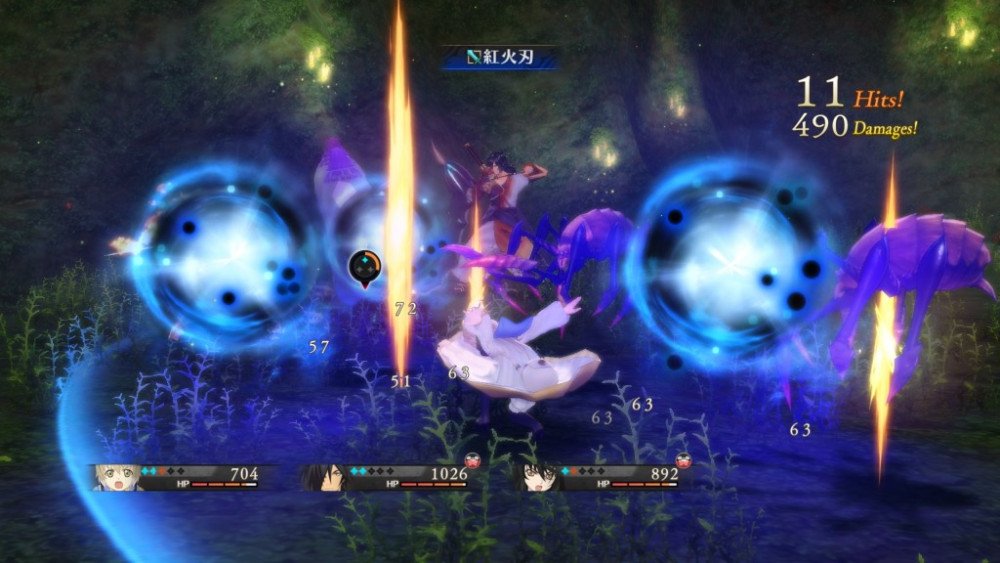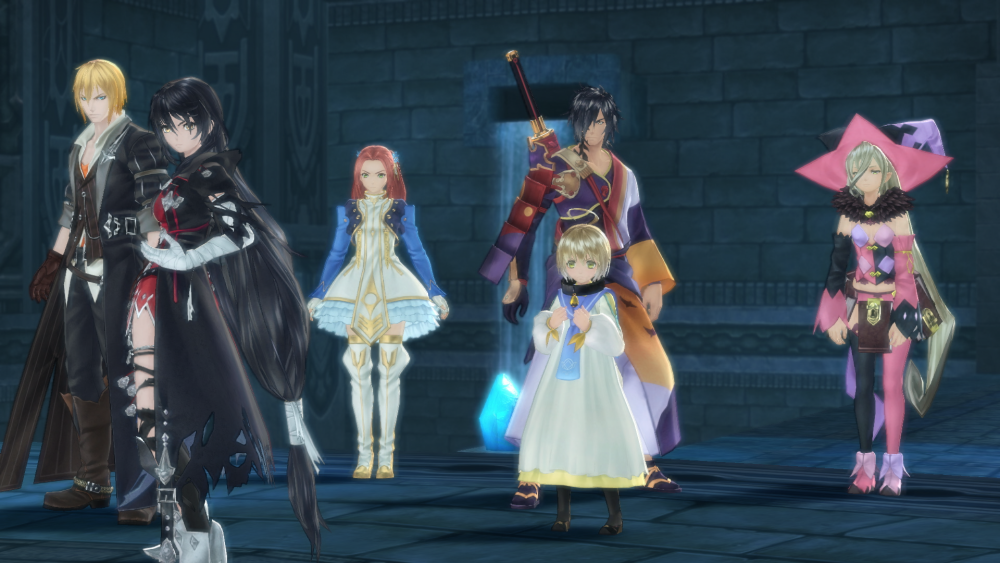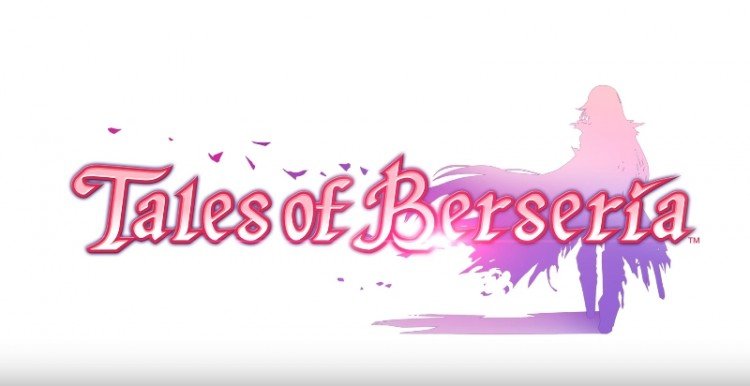Tales of Berseria is the 16th game in the main series of Tales games. It should be noted that Berseria was my introduction to the Tales series, so I cannot make any fair comparisons to other games in the Tales series. Nonetheless, I found Berseria to be newcomer friendly and easy to follow in terms of plot.
Game Name: Tales of Berseria
Platform(s): PS3 (Japan only), PS4
Publisher(s): Bandai Namco Entertainment
Developer(s): Bandai Namco Studios
Release Date: January 24, 2017
Price: $59.99

The game opens with a 2D animated cutscene introducing Velvet Crowe, our protagonist, her younger brother Laphicet, and her brother-in-law Artorius. Velvet’s older sister Celica is killed during an event called the Scarlet Night, in which their village is overtaken by a force known as the daemonblight. It works as a disease, turning humans into daemons.
Fast forward a few years, and Velvet is 16. When looking for Laphicet, Velvet came upon Artorius sacrificing him during a second Scarlet Night. Artorius tries to use Velvet in his ritual as well, but the daemonblight possesses her arm, making her part-daemon. Velvet is then thrown into a prison for daemons, where she swears to get revenge on her brother-in-law Artorius. She makes her escape three years after the sacrifice of Laphicet, doing so with the help of a samurai named Rokurou and a self-proclaimed witch named Magilou, who serve as two out of the six total playable characters. Are you with me so far?
To put it simply, Tales of Berseria is a story of revenge. The prologue is slow, and mostly has Velvet running errands in the village and taking care of her brother Laphicet. The game then takes a drastic shift in tone, and Velvet becomes a hardened heroine that will do anything to find Artorius. But make no mistake, Berseria has a surprisingly good sense of humor and is never afraid to poke fun at itself.

The English voice acting successfully brings this colorful main cast of characters to life, but players are also given the option to play in Japanese. Many of the NPCs encountered in towns were less believable, but for the most part the main set of characters were engaging and charismatic. The interactions between Velvet and her companions are where Berseria really shines, as I found myself looking forward to their pop-up conversations. These relationships aid in the exploration of one the game’s core themes – the dichotomy between emotion and reason. Velvet learns more about her own humanity (and lack of) through her friendships, and particularly the familial bond she builds with Laphicet #2 (it’s a long story).
Tales of Berseria has players engage in battles, some of which are optional and some of which are not. Firstly, each playable character has their own set of “artes”, which are physical and magical attacks that can be mapped to the x, square, circle, and triangle buttons. Customize the artes into a string of actions so that by pressing a button multiple times, the character preforms a combo. However, the moves in a combo are limited by the number of souls your character has in its meter. Each character begins a battle with three souls and may lose souls and steal them from enemies.

The game continued to introduce new mechanics into the game even after several hours of playtime. This speaks to the combat system’s complexity, but it could be a bit overwhelming when the game threw several dialog boxes of text at the player at once. Despite this, Berseria can feel somewhat “button mashy” at times. Especially during the first few hours of the game, it is far too easy to press random buttons and power your way through a battle. This improves as the game progresses and Velvet and her team are faced with more difficult enemies. At this point, strategy is key and players will need to look at an enemy’s weaknesses and customize an attack based on them.
This is only scratching the surface of Berseria‘s combat system, but once you get acquainted with it, it’s pretty damn fun. Battles are high-energy and fast-paced; in my opinion, it was one of Berseria‘s stronger assets.
Players come across different weapons and equipment throughout the world, or they can purchase it in towns. When items are equipped on a character, they will begin building their “mastery skill”. The amount of items you collect can feel a bit overwhelming, considering you are often not even close to having a high mastery of the item before another one is collected. I had a difficult time adjusting to this mechanic and often had to remind myself to go into the menu and swap out clothing or weapons for each of the characters to evenly spread out skills.

Tales of Berseria looks like a PlayStation 3 game, which is unsurprising considering it had a PS3 release in Japan. There is nothing wrong with the way the game looks, but don’t anticipate Berseria to push the graphical limits of the PS4. My biggest issue was that the world design could be dull. Caves, dungeons, and castles lacked variety in their rooms, and many of the long corridors looked the same. It was annoying when I had to backtrack through an unnecessarily large area and keep referring to my map.
There are a few fast travel methods, including spots called “warp points” and collectible potions, but I felt these methods were few and far between. The map isn’t massive, but it is big enough that backtracking can feel like a chore. This is especially true when there is little about some of the areas to make it interesting. Furthermore, some of the optional enemies occupying these areas were more of a nuisance than they were threatening. They could easily be dodged and even when a battle was engaged, the characters can easily escape.
Tales of Berseria isn’t perfect. Velvet’s quest for revenge is one that’s been done many times before, but Berseria still managed to surprise me at more points than one. It has its fair share of cheesy moments, but still, it finds a way to catch players off guard. Beneath its shortcomings, Berseria has a lot of heart. The game drags towards the middle, but Velvet and the relationships she makes pull it forward.
*Tales of Berseria was provided to us by Bandai Namco Entertainment for review purposes. For more information on how we review video games and other media/technology, please go review our Review Guideline/Scoring Policy for more info.
*Screenshots were taken from the official “Tales of” blog.
Tales of Berseria (PS4) - Review
Summary
Tales of Berseria is far from perfect, but the game is interesting and energetic enough that its flaws are easy to overlook. Velvet’s quest for vengeance with the help of her colorful companions is entertaining, even if it tends to drag on a little. But at the end of the day, it’s pretty damn fun, and isn’t that what really matters?
Pros:
- Good performances from the main English cast
- Likeable characters
- Lots of content
Cons:
- Environments can appear uniform
- NPC voice acting was weak at times
- Story drags a bit in the middle
-
Witty sentence here and the score. remember to use the star system!


